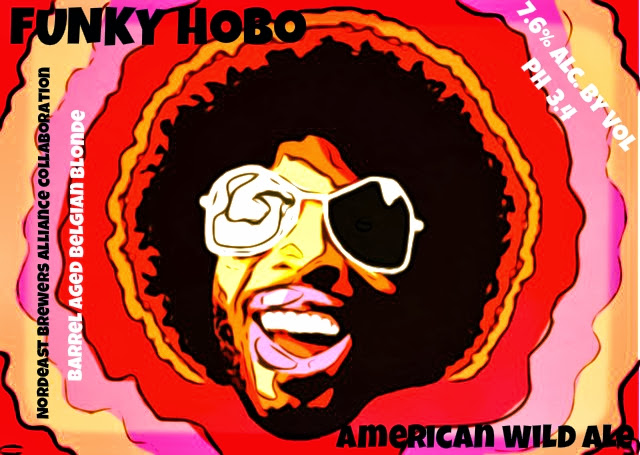Ever since trying
Cantillons Vingneronne - Lambic aged on Grapes about a year ago (holy crap you have to get a taste of this stuff), I knew I needed to somehow make an attempt at something similar. Being that I have 5 or 6 Lambic or Flanders or Wild Saison, or American Wild Ales aging at any given time I knew I'd have the opportunity to grab a couple gallons of my Wild beer to age on grapes. The hard part was finding some grapes as I live in
Minnesota...
Nordeast Mpls..
.that's what's up. I had heard that sometimes local home brew stores will get shipped whole grapes from Cali, but upon further investigation, both
Northern Brewer, stopped doing that this year because it wasn't profitable for them.and
Midwest you can get buckets, but the weird thing is that the whole grapes are sent to you already crushes, with Yeast pitched in the bucket already. That just wouldn't do for my situation. So, being that I'm all about local ingredients, and unprocessed things, and organic whenever possible I started looking for a local alternative. Well, just my luck, it turns out that the
U of M has an exceptional breeding program and Grape growing program specifically designed around producing grape varieties that are cold hardy to be grown for eating, and to be used at wineries in cold hardy regions! On top of that, one of the main guys
Peter Hemstad involved with the grape breeding program also owns a local winery,
St. Croix Vineyards. I reached out to Peter in the Spring because I had heard about a free tasting he does of over 70 varieties (don't quote me on that I think it's more then 70) of grapes during harvest season at the
MN Arboretum. Like most people that are extremely passionate about the things that they do, Peter was more then happy to talk to me about the local grape varieties that he has spend the good part of his life breeding, cultivating, analyzing, eating, turning into wine, etc. In our conversation he mentioned that he owns St. Croix Vineyards, and that I should stop out to try his wines. The conversation then turned to my desire to age some of my Wild Ales on local grapes similar to what Cantillon has done. He was intrigued enough to talk to me about it, although he didn't hesitate to ask "why would you want to put my grapes in a beer that has already been "spoiled"." Now, he was just kidding to some degree, but at the same point, Brettanomyces is the devil to most Vintners. When a winery detects Brett in their Wine it is typically a lost cause at that point, and the typical detector is a Band-Aide type aroma. Not good, not good at all. I our conversation we talk about some specific grape varieties he will have available and their characteristics.

- Frontenac - (Plum, Berry, Cherries)
- Frontenac Gris - (Peach, Tropical Fruit, adds body)
- La Crescent - (Aromatic, Peach , Citrus, Pineapple, Tropical Fruit)
- Marquette (Cherry, black pepper, complex)
- Brianna (grapefruit, pineapple)
Fast forward to last weekend
which was the start of their harvest season at St. Croix Vineyards and I made
my way to put in a 4 hour shift at the vineyard to harvest some grapes.
Now, harvesting grapes can be a tedious process. Some grapes are under
developed and pinkish and extremely acid, those don't make the cuts, their are
also many grapes that have been burst, and ants, and bees are all over them
just sucking in the sweet goodness. A 4-hour shift was kinda long so
make sure you are down if you decide to help them out. In my
shift we picked Marechal Foch grapes, and they were in small
clusters. That's the key word that we used..."this is a beautiful
cluster!" That meant, all of the grapes are in tact and I don't have
to do much work. Anywho...it was a great experience. Part of the deal at
SCV is that if you help out for 4 hours, they will give you two bottles of
wine. Instead I asked, how many pounds of grapes go into 1 bottle, (4-5
lbs.)
- 5 lbs of Frontenac
Gris (pr. Gree)
(Peach,
Tropical Fruit, adds body
(Cherry,
black pepper, complex)
- 2 lbs of Un-named U of M experimental grapes
(apparently
although they taste beautiful, they didn't produce enough large clusters of
grapes to justify mass production as a cold hardy variety. I have 2 lbs
of a grape variety that you will never ever be able to get, see, or try, other
then the beer that I age then in! )
Hell Yeah! Locally grown grapes for adding to my Wild Beers!
According to a video I saw about Cantillons grape beers, they use appr. 2
lbs per gallon of whole grapes, so that's where I'm going to start.
Planning on tasting some of my Lambic style beers to figure out which
ones will complement these grapes the best and let them shine.
I'm thinking 2 gallons of Lambic on Frontenac Gris, 2 gallons of Lambic on
Marquette, and 1 gallon of Lambic on Unnamed grape variety!
Needless to say, I have a new found respect for grapes, and wine, and terroir,
and especially wine. I'm gonna go out and get a bottle or 12 today!
"Our winery doesn't run unless there is Summit in the fridge. We
make wine, and when we make wine, we drink beer!" - Peter Hemstad quoting
someone else that works at SCV.
******Spaced reserved to give updates and tastings on my beers that I age on
these grapes.*******






